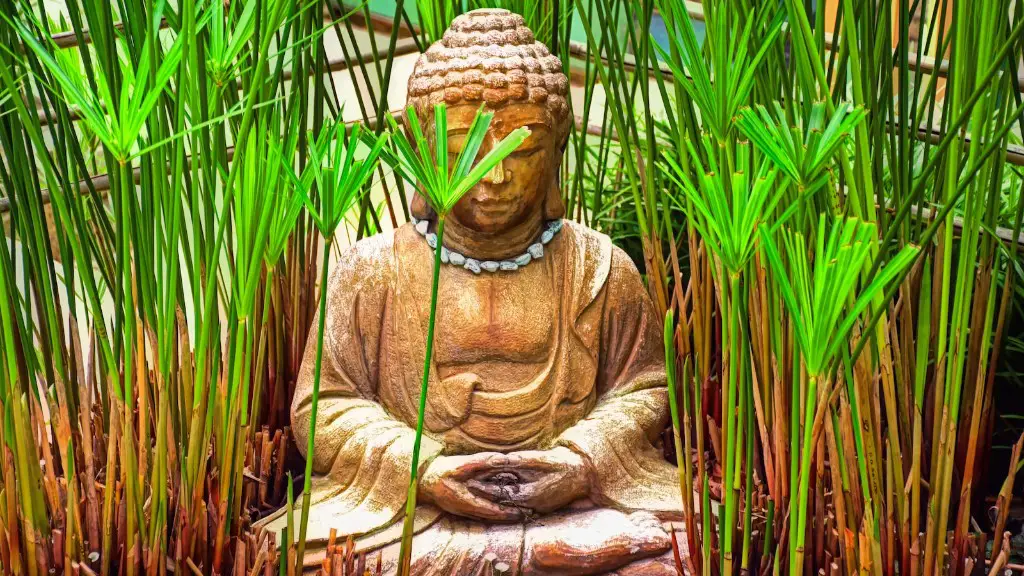Buddhism is an ancient religion with a rich and varied history. There are many ways to study Buddhism, but studying at home is a great way to learn at your own pace and in your own environment. Here are a few tips on how to study Buddhism at home:
There is no one answer to this question as everyone’s situation is different. However, some tips on how to study Buddhism at home may include setting aside some time each day to read Buddhist texts, attending a local meditation group or temple, and listening to Buddhist podcasts or lectures. Practicing mindfulness in everyday activities can also be helpful in understanding and applying the Buddhist teachings to daily life.
How can I practice Buddhism on my own?
Buddhism is a religion and philosophy that originated in India in the 6th century BCE. The Buddha, Siddhartha Gautama, taught a Middle Way between sensual indulgence and the severe asceticism of the Jains. He taught that people could escape suffering by following the Noble Eightfold Path. This path includes right views, right resolve, right speech, right action, right livelihood, right effort, right mindfulness, and right concentration.
The Buddha also taught the Four Noble Truths, which are that suffering exists, that it has a cause, that it can be ended, and that there is a path to the end of suffering. He taught that the way to end suffering is to cut ties to desire and need. This can be done by following the Noble Eightfold Path and by practicing the Five Precepts, which are to refrain from harming living beings, stealing, sexual misconduct, lying, and taking intoxicants.
Buddhism is a religion of peace and compassion. It teaches that we should live with kindness and respect for all beings. By following the path of the Buddha, we can end our own suffering and help to end the suffering of others.
The Four Noble Truths are the foundation of the Buddha’s teaching. They are:
1. The truth of suffering
2. The truth of the cause of suffering
3. The truth of the end of suffering
4. The truth of the path to the end of suffering.
If you want to learn about Buddhism on your own, I suggest you start with the Four Noble Truths.
How do I start a Buddhist life
Anyone can become a Buddhist by taking refuge in the Triple Gem and following a ceremony during which they take a vow to uphold the Five Precepts.
There are many great Buddhist books for beginners. A few of our favorites are Blue Jean Buddha: Voices of Young Buddhists, Buddhism for Beginners, Buddhist Philosophy: Essential Readings, Creation and Completion: Essential Points of Tantric Meditation, The Issue at Hand, Mindfulness in Plain English, Pure Land: History, Tradition, and Practice, and Siddhartha. These books will give you a great introduction to the basics of Buddhism and help you start your journey on the path to enlightenment.
Can Buddhists drink alcohol?
Buddhism teaches that drinking or using other kinds of drugs can cause carelessness and should be avoided. Strong Buddhist beliefs would be expected to have a significant impact on alcohol use.
The monks wake up at 400 am and meditate for one hour, followed by one hour of chanting. At 600 am, the monks walk barefoot around the neighbourhood while the local people make merit by offering them food. At 800 am, the monks return to the temple and sit together to eat breakfast.
What should you not do in Buddhism?
The precepts are an important part of the Buddhist path to enlightenment. They are commitments to abstain from killing living beings, stealing, sexual misconduct, lying and intoxication. By following the precepts, we develop our mind and character and make progress on the path to enlightenment.
Anyone can be a Buddhist. An individual does not particularly have to be born or raised in Buddhist culture nor do anyone’s parents have to be Buddhist. The said individual can be of any race, region, gender, socio-economic background, etc.
Do you have to pray as a Buddhist
Dear Colleen,
Yes, Buddhists do pray, but not in the same way that other religions do. For Buddhists, prayer is more of a meditative practice meant to align oneself with the universal energy of all living things. This is done through practices like radiating loving-kindness, which is thought to have a positive impact on all beings.
Saying “Amituofo” to each other is a great way to show respect and well-wishing. Not only do Buddhists feel happy and inspired when they hear this, but non-Buddhists also feel a sense of peace. chanting “Amituofo” can help us to transform our thoughts and feelings into something more positive and beneficial.
How to practice Buddhism everyday?
Buddhism is a religion that emphasizes the importance of living in the present moment and being kind to all beings. Although it originated in Asia, Buddhism is now practiced all over the world.
There are many ways to practice Buddhism in daily life. Upon waking up, we can cultivate a kind heart by taking a few moments to meditate on our day ahead and setting an intention to be mindful of our words and actions. Throughout the day, we can practice mindfulness by being present in the moment and being aware of our thoughts, feelings, and actions. At the end of the day, we can reflect on our day and see how we can improve for the next day.
One of the most important aspects of Buddhism is the interdependence of all beings. We are all connected, and our actions impact others. Therefore, it is important to be mindful of the impact our actions have on others and to always act with kindness.
Buddhists believe that there is no god or supreme being that controls everything. Instead, they focus on reaching enlightenment through their own actions and deeds. Although there are supernatural beings that can help or hinder people, Buddhists do not believe that these beings are gods.
What is the Buddhist Bible called
The Tipitaka (Pali Canon) is the body of scriptures of the Theravada school of Buddhism. The Pali Canon is the oldest surviving Buddhist scripture, and it is the only complete Buddhist canon that has survived into the modern era.
It’s important to keep your awareness focused while you’re paying attention to your breathing process, one breath at a time. Be gentle with yourself and keep an attitude of discovery and friendliness towards yourself. If any thoughts pop into your mind, simply acknowledge them and let them go.
What are the 3 main Buddhist beliefs?
Buddhism is a religion that is based on the teachings of Siddhartha Gautama. The main principles of this belief system are karma, rebirth, and impermanence. Karma is the belief that our actions have consequences, both good and bad. Rebirth is the belief that we are reborn into this world after we die. Impermanence is the belief that everything is constantly changing and nothing lasts forever.
Buddha’s advice on food is to eat with attention to balance, harmony, and delicacy. All Buddhists follow this advice by eating consciously. Among the things to avoid eating, Buddha advised monks to avoid 10 kinds of meat for self-respect and protection: humans, elephants, horses, dogs, snakes, lions, tigers, boars and hyenas.
Conclusion
To study Buddhism at home, the most important thing you need is a good teacher. You can find many books on Buddhism, but without a good teacher, it is easy to get lost. A good teacher will help you understand the basics of Buddhism and then guide you through the more advanced concepts. They will also help you find the right resources to study at home.
In conclusion, studying Buddhism at home can be a very rewarding and enriching experience. By reading and learning about the religion, you can deepen your understanding of its practices and beliefs. Additionally, studying at home can allow you to take your time in learning about the religion, and give you the opportunity to ask questions and explore topics in depth.




